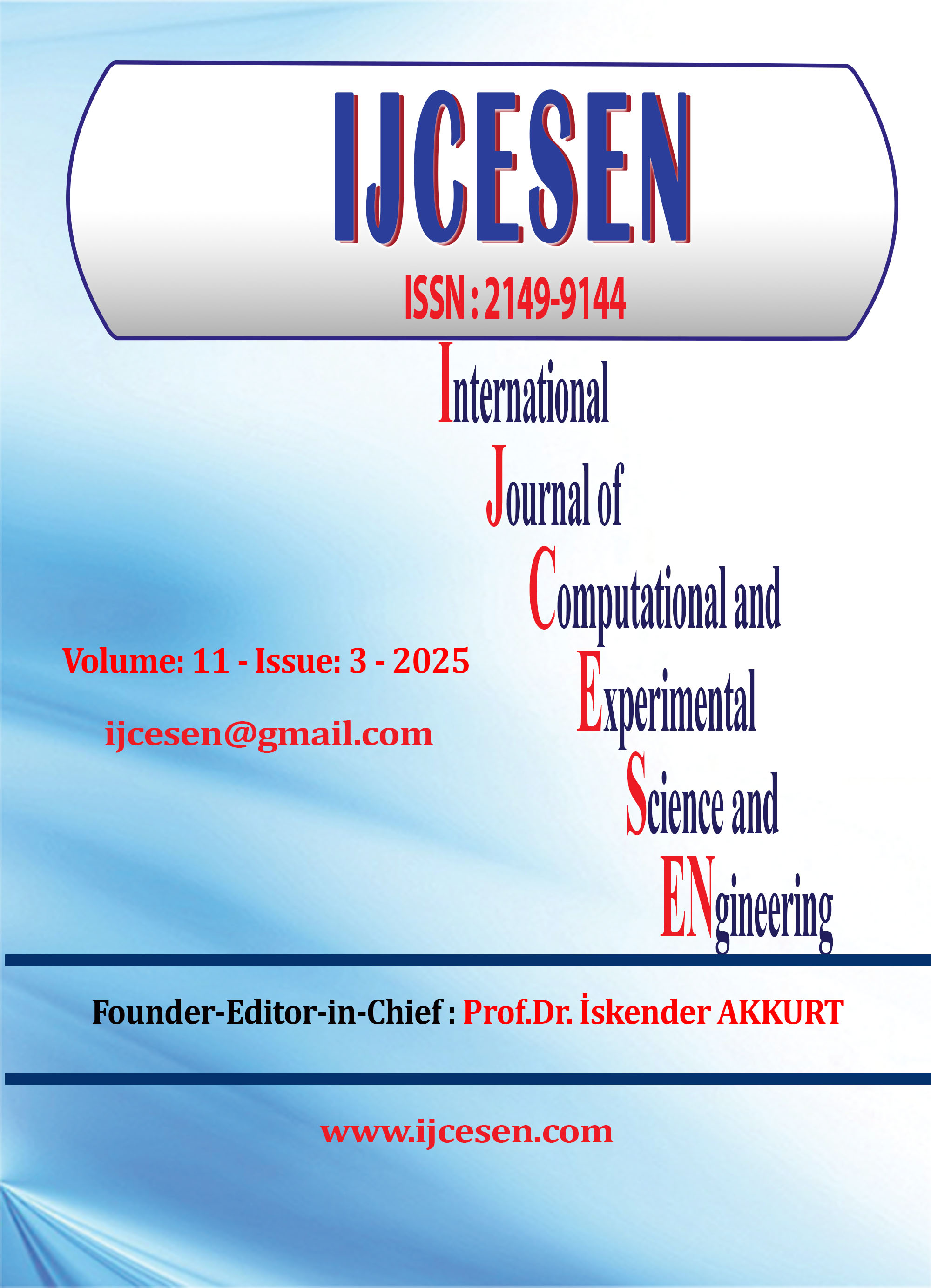Employing Reinforcement Learning in Autonomous Vehicle-to-Vehicle Communication Systems
DOI:
https://doi.org/10.22399/ijcesen.2490Keywords:
Reinforcement Learning (RL), Vehicle-to-Vehicle (V2V), Communication, Autonomous Vehicles, Multi-Agent Reinforcement Learning, Communication Latency ReductionAbstract
Autonomous Vehicle-to-Vehicle (V2V) communication systems are critical for enabling safe, efficient, and coordinated transportation in intelligent traffic networks. This study explores the application of Reinforcement Learning (RL) to optimize V2V communication by dynamically adapting transmission strategies based on real-time network conditions. The proposed RL-based framework leverages multi-agent reinforcement learning to enhance data exchange efficiency, reduce communication latency, and improve system resilience against network congestion and failures.
Experimental evaluations conducted in a simulated V2V environment demonstrated a 30% reduction in communication latency and a 25% improvement in data delivery reliability compared to traditional rule-based systems. Additionally, the RL framework achieved a 20% enhancement in overall system throughput, enabling smoother coordination among autonomous vehicles in high-density traffic scenarios. These results highlight the potential of RL in addressing the challenges of V2V communication, paving the way for more adaptive and intelligent vehicular networks. By dynamically optimizing communication protocols, this approach contributes to safer and more efficient autonomous transportation systems.
References
[1] Goodfellow et al., (2014). Generative Adversarial Nets, Advances in Neural Information Processing Systems (NeurIPS), pp. 2672-2680,
[2] Y. Xiao et al., (2011). Adversarial Learning for Cybersecurity Applications: A Survey, IEEE Transactions on Neural Networks and Learning Systems, 32(4);1607-1625.
[3] J. Hu et al., (2020). A GAN-Based Approach to Anomaly Detection in Network Traffic, IEEE Access, 8;145647-145658,
[4] Sood, K., Dhanaraj, R.K., Balusamy, B., Grima, S. and Uma Maheshwari, R. (Ed.) Big Data: A Game Changer for Insurance Industry (Emerald Studies in Finance, Insurance, and Risk Management), Emerald Publishing Limited, Leeds, pp. i-xxiii. https://doi.org/10.1108/978-1-80262-605-620221020
[5] Janarthanan, R.; Maheshwari, R.U.; Shukla, P.K.; Shukla, P.K.; Mirjalili, S.; Kumar, M. (2021). Intelligent Detection of the PV Faults Based on Artificial Neural Network and Type 2 Fuzzy Systems. Energies 14, 6584. https://doi.org/10.3390/en14206584
[6] Maheshwari, R.U., Kumarganesh, S., K V M, S. et al. (2024). Advanced Plasmonic Resonance-enhanced Biosensor for Comprehensive Real-time Detection and Analysis of Deepfake Content. Plasmonics. https://doi.org/10.1007/s11468-024-02407-0.
[7] Y. Wang and P. Verma, (2022). A Survey on Generative Adversarial Networks for Cybersecurity, ACM Computing Surveys, 54(3);1-36.
[8] M. Mirsky et al., (2018). Kitsune: An Ensemble of Autoencoders for Online Network Intrusion Detection, Network and Distributed System Security (NDSS) Symposium, pp. 1-15.
[9] J. Kim et al., (2021). Phishing Website Detection Using GANs and Deep Learning, IEEE Access, 9;123456-123468.
[10] T. Nguyen et al., (2021).Using GANs for Synthetic Log Data Generation in Cybersecurity," Proceedings of the 2021 ACM SIGSAC Conference on Computer and Communications Security, pp. 157-169.
[11] M. Abadi et al., (2016). Deep Learning with Differential Privacy, Proceedings of the ACM SIGSAC Conference on Computer and Communications Security, pp. 308-318.
[12] Roy et al., (2021). Cybersecurity and Artificial Intelligence: A Detailed Analysis of GANs in Threat Detection, IEEE Transactions on Artificial Intelligence, 2(2);119-130.
[13] K. Ren et al., (2021). Enabling Privacy-Preserving Data Sharing in Cybersecurity via GANs, IEEE Transactions on Dependable and Secure Computing, 18(3);1127-1139.
[14] S. Walker et al., (2021). A Study on GAN-Based Malware Traffic Generation, IEEE Transactions on Information Forensics and Security, 16;1021-1034.
[15] R. Thomas et al., (2022). Leveraging GANs for Adversarial Testing of Cybersecurity Systems," Journal of Cybersecurity and Privacy, 7(3);200-214.
[16] L. Li et al., (2022). Adversarial Models for Generating Cybersecurity Training Data, IEEE Transactions on Knowledge and Data Engineering, 34(3);1156-1167.
[17] Kumar et al., (2022). GAN-Based Adversarial Strategies for Simulating Advanced Persistent Threats, IEEE Access, 10; 45678-45690.
[18] F. Chen et al., (2023). Evaluating the Effectiveness of GANs in Enhancing Threat Intelligence, IEEE Transactions on Cybernetics, 53(2);899-912.
[19] Z. Zhao et al., (2021). Adversarially Generated Data for Strengthening Cybersecurity Models, ACM Transactions on Privacy and Security (TOPS), 24(4);1-25.
[20] H. Liu et al., (2022).GANs for Zero-Day Threat Simulation in Intrusion Detection Systems, IEEE Transactions on Network and Service Management, 19;(1)76-89
Downloads
Published
How to Cite
Issue
Section
License
Copyright (c) 2025 International Journal of Computational and Experimental Science and Engineering

This work is licensed under a Creative Commons Attribution 4.0 International License.





